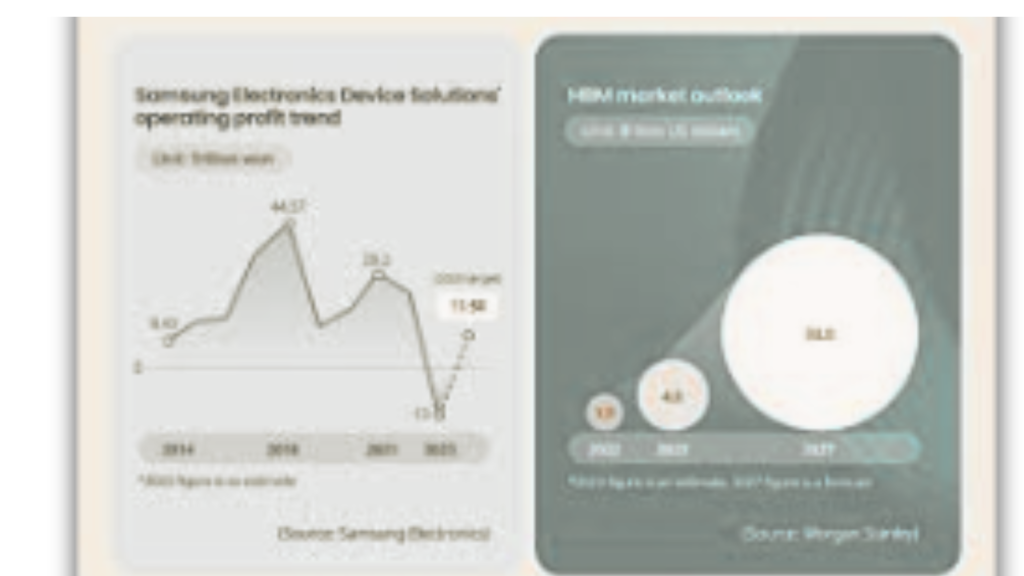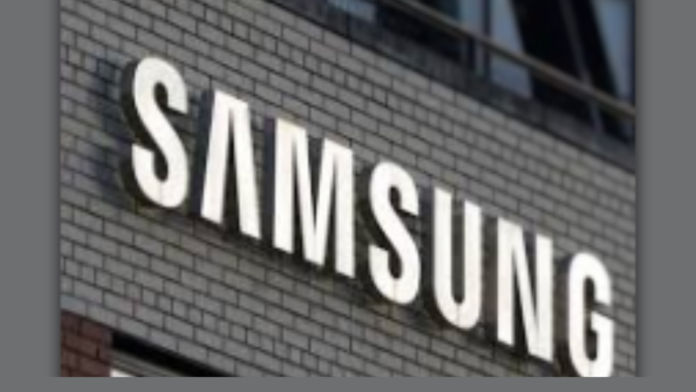For an extended period, samsung mobile 5g semiconductor division has been among its most lucrative business segments. The division has reportedly been struggling lately, with an estimated $10 billion in losses in 2023.
Samsung hopes to dramatically improve these circumstances by 2024. According to reports, the company wants to turn a profit on its chip business this year of 11.5 trillion won, or about $8.8 billion. Everything is set up for (Samsung) to be successful in this undertaking.
samsung mobile 5g is selling a lot of memory chips thanks to AI.
The overabundance of DRAM and NAND flash memory on the market last year was the primary cause of Samsung’s significant chip losses. Over the past year, Samsung has worked hard to lower wafer input and lower total inventories.
The effects were evident from October to December 2023, when a tighter supply led to a price recovery. The AI boom is also helping the company see a rebound in demand from PC and smartphone manufacturers, especially for computer express link DRAMs and high bandwidth memory (HBM).
Samsung is in a good position to benefit from the increase in memory demand brought on by the AI boom. Buyers are reportedly prepared to spend up to $1 billion on each HBM pre-order. samsung mobile 5g share of the global HBM market is 47–47 percent.

Yet, Samsung is still exposed to risk due to its current inventory. According to reports, it has memory inventories worth over $15 billion, which it might have to sell at a loss because they’re out-of-date models. It is expected that Samsung will continue to lower NAND production in an effort to raise prices.
Samsung aims to persuade one billion people by the year 2024.
A new day, a new dawn, and a new year have arrived. Now that 2024 has officially arrived, many of us are ringing in the new year with goals we intend to maintain past the first few weeks of January. samsung mobile 5g has set a goal for the year 2024 as well, intending to revolutionize the smartphone industry in the process.
Samsung has never hidden the fact that it believes foldable smartphones will be the way smartphones are made in the future. The company’s faith in this future is so great that it decided to abandon the highly anticipated Galaxy Note series in favor of foldable devices. Three Galaxy S flagships, two foldable flagships, and two Galaxy Note flagships were all too much for it to handle during its release cycle. The cherished Note series was the thing that had to give.
Prior to the 2019 launch of the first Galaxy Fold, the company and its affiliates had been developing foldable technology for years. That gadget was more of a proof of concept, and the company released the original Galaxy Z Flip and Galaxy Z Fold smartphones the following year as proper models. But their debut couldn’t have come at a worse time, since the pandemic quickly took hold of the entire world. People suddenly stopped feeling inclined to impulsively spend $1,000 or more on cellphones.
The world was slowly opening up again in 2021, but the market conditions remained difficult. People’s financial situation was so bad that they were restricting pointless purchases while continuing to worry about a pandemic revival. Things only began to gradually get better in 2022, but as tensions increased, the world was forced to face a recession.

Even though major markets experienced a peak in inflation and a recession was never completely ruled out, 2023 was marginally better. Samsung’s foldable smartphone sales have increased despite the difficult market conditions, as consumers grow more persuaded that these gadgets can actually replace their daily drivers. Much of this can be attributed to samsung mobile 5g efforts to address durability issues, specifically with the hinge and foldable panel. The Galaxy Z Fold 5 and Galaxy Z Flip 5 from last year are without a doubt two of the toughest foldable phones available.
By 2024, samsung mobile 5g wants to have sold 20 million foldable phones. Even though that number pales in comparison to the hundreds of millions of regular phones Samsung sells annually, it nevertheless demonstrates a steady rise in demand for the company’s foldable smartphones. All things considered, though, foldable phones represent a very small portion of the worldwide smartphone market.
Counterpoint Research estimates that only 16 million of the 1.2 billion smartphones expected to be sold in 2023 were foldable phones. That represents a pitiful 1.3%, and the 16 million figure encompasses foldable phones from other manufacturers in addition to Samsung. However, with 73% of the market for foldable phones, samsung mobile 5g is still benefiting from being first to market.
The company’s dominance in the market is currently under threat due to intense competition. Foldable phone models have been released by prominent Chinese manufacturers, including Huawei, OnePlus, Oppo, Vivo, Xiaomi, and others. They are aggressively pursuing Samsung in markets throughout Asia, Europe, the Middle East, and North Africa in addition to witnessing strong demand in their native China, where Samsung has virtually no presence.
Samsung’s biggest challenge is convincing the vast majority of people to give up their traditional phones in favor of foldable devices, even though its foldables are objectively better than what the competition is releasing. It must be Samsung’s goal for the year 2024 to persuade the billion or so people who purchase new phones every year to consider a Galaxy Z device instead.
The largest obstacle, according to analysts, is persuading consumers to purchase foldables at a premium price tag while alluding to their reservations regarding the mechanical hinges and foldable screens’ longevity. Samsung still has a ways to go before many more people are comfortable switching, despite everything it has done in this area.
Samsung is making every effort to reduce the price risk for prospective buyers. It frequently runs incredible sales on its website, with the price of a Galaxy Z Fold 5 potentially as low as a few hundred dollars if you trade in an old device. When combined with its incredible deals, the Galaxy Z Flip 5’s already reasonable $999 price tag makes it an easy choice.
In the end, the foldable form factor is necessary for the company to offer customers benefits beyond just being able to fold in half. In order to demonstrate to customers that these devices are capable of doing things that their regular phones cannot, even if they have identical specifications and are running the same version of Android, it should keep creating innovative and engaging software features that fully utilize this special form factor.
Would that be sufficient to increase sales of foldable phones in the upcoming years by several multiples? Assuming Samsung meets its target of 20 million units by 2024, when might we expect to see it sell 100 million foldables in a single year? It could be argued that in order to do so, Samsung might need to increase the lineup.
There is a case to be made for more reasonably priced foldables, but it wouldn’t be very effective unless it could persuade consumers that the change is worthwhile. Maybe the company will continue with its current approach for a few more years in order to prepare the ground for a later mass market push.
In any case, Samsung has its work cut out for it. It is an enormous task to persuade a billion people to reconsider what a smartphone can be, considering that the majority have only ever used one form factor. We can only hope that Samsung maintains its New Year’s resolution of going to the gym more frequently more successfully than the majority of us.


[…] has a thriving lineup of midrange tablets in addition to some of the best high-end tablets available right now. Thus, when the company announced the release of two Galaxy Tab A9 tablets in […]